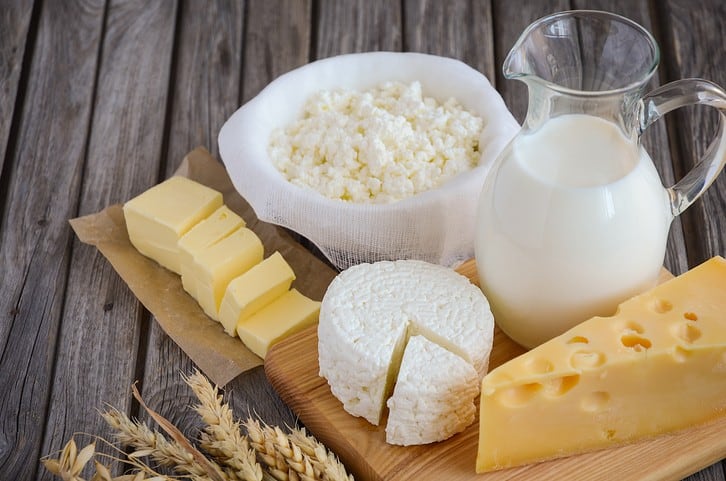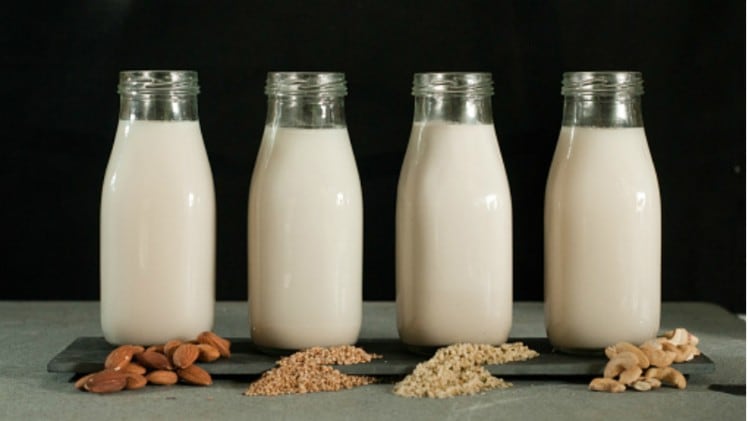Although dairy products from milk to ice cream are very commonly found in the kitchens of ASEAN consumers, the fact remains that per capita dairy consumption in the region is far lower than that in many other markets, at less than 20kg per capita compared to around 300kg per capita in the United States according to Statista.
It is very common for Western families to buy large 2L to 3L cartons of milk on a weekly basis, but in South East Asia the best-selling carton sizes are the 1L cartons, which are not necessarily purchased weekly either.
According to one of China’s largest dairy firms Yili, this lower consumption can be explained by widespread lactose intolerance in the region - studies have estimated the frequency of lactose intolerance in consumers to be between 90% to 100%.
That said, the firm remains confident in the plans it previously revealed for the ASEAN region, standing by its strong belief that this current situation is due to consumer habits that have been formed over the years - a situation which can still be corrected with proper consumer education and promotion.
“Dairy products have traditionally been regarded as food for children and the elderly, and there are large lactose-intolerant populations in South East Asia – this in turn means dairy has not [had the chance to be] incorporated into regional cuisine yet,” Yili Assistant President Dr Yun Zhanyou told FoodNavigator-Asia.
“The only way to overcome this is for the entire industry as a whole [to not merely accept the current situation as status quo], but focus on introducing the merits of dairy products to South East Asian consumers and let them enjoy the benefits of this healthy food – eventually, there will come a time when dairy is fully incorporated into the regional cuisine.
“The health benefits of dairy cannot be ignored [especially] when it comes to protein and calcium, [and] increased health awareness amongst ASEAN consumers has meant that their use of dairy products is on the rise - there are over 650 million people in the region, representing a very huge opportunity.
“In addition, [we also know that] various governments such as Thailand have been active in promoting the incorporation of dairy in diets, and launched initiatives to encourage the consumption of milk in schools – Thailand has witnessed a boom in its dairy market in recent years, as local residents increasingly consume dairy products to support healthier lifestyles, [so full incorporation is possible in the long term].”
The other main hurdle that the dairy market has been facing in the region is supply chain related, which inadvertently leads to higher costs for high quality dairy – not the best situation in a market that is extremely price-sensitive.
“The dairy industry has a very long value chain, [but in South East Asia the] local dairy industry is relatively weak with a less-developed industrial chain, a shortage of premium natural farms, and a lack of knowledge and technical skills among dairy farmers – meaning that it is expensive to build up the industry in the region,” said Dr Yun.
Yili has established two South East Asian facilities in Thailand and more recently Indonesia, but Dr Yun acknowledged that even with these local manufacturing plants and on-the-ground operations, handling the supply chain in markets where this is not so developed – particularly in comparison to markets where this is extremely advanced like China – remains a very big barrier to expansion for the firm.
“Geographic and climatic factors also constitute barriers for dairy transport – e.g. the population of Indonesia and some other South East Asian countries are scattered all over countless islands, which creates challenges for product distribution,” he said.
“The humid weather conditions also make it necessary to implement an industrial cold chain system with better performance, as it takes more time and higher costs for dairy products to reach remote areas and islands – [which in turn] can lead to higher product prices for higher quality products.”
Intense competition
Interestingly, Dr Yun also pointed out that despite the high levels of lactose intolerance and low supply chain development, another major challenge the firm is facing in the region is ironically that of intense market competition from other countries.
“The South East Asian market is highly dependent on imports when it comes to dairy, which in turn means that we have to compete intensely with other cross-border dairy brands in addition to local dairy enterprises,” he said.
“[This] does showcase how dairy has remained a popular item despite the high lactose intolerance levels here [but also that] in order to stand out from others, we need to prioritise the development of high-quality products and build differentiated, localised brands through innovative R&D and marketing here in this region.”
According to a 2019 ASEAN dairy industry study, the countries with the highest dairy import volumes are Malaysia, Philippines, Singapore and Thailand, with the most imports coming in from Australia, Argentina, the EU, New Zealand and the United States.
Yili has identified many ‘unsatisfied needs’ for dairy products in South East Asia, which it intends to fulfil using its many complete product lines in the dairy sector which can cover the manufacturing of products from liquid milk to milk powder to yoghurt, ice cream, cheese and more.
“The many gaps in the market imply huge market opportunities here for us,” said Dr Yun.
“As an example of this gap as well as one of the ways we have overcome the supply chain challenge, we launched high-end yoghurt brand AMBPOEIAL Greek yogurt in the region - This product can be stored at ambient room temperatures and does not require cold chain, [reducing the traditional logistical issues].
“This is the way Yili hopes to innovate and develop, by tailoring products according to the unique characteristics of local consumer markets and cultures throughout South East Asia [so as to] also overcome the unique challenges faced in the markets here.”



